
With the many aspects of life that municipal websites are a part of, we can no longer view them as just a nice-to-have—they’re a necessity.
A couple of years ago, we identified with a payoff line, “The Last Municipal Website you’ll ever Need”, which rings true at the time of writing, but it warrants a few tweaks.
In the dynamic landscape of all things digital, municipality websites went from being “a nifty little tool” to “need of the hour”. They now serve as digital front doors, and unlike a town hall entrance, this one’s open all day, every day.
Just like town halls, websites are service centers. They’re not there simply to look nice; they’re a vital tool for engagement, communication, and service delivery. As communities evolve, so do their expectations.
In order to stand out and serve effectively, they need to offer a combination of functionality, information, and the opportunity for community engagement. In this article, we explore the key elements of outstanding municipal websites and provide examples that illustrate them.
Our Favorite Municipal Websites
Designing a great municipal website is definitely easier said than done, but the criteria for what makes it great are pretty clear. With that in mind, we scoured the web in search of the perfect examples and zeroed in on 5.
Finding these wasn’t as quick and simple as we’d hoped. Many sites out there direly need some TLC. It’s 2024, so this is a bit of a surprise, especially when you compare them with how well made the following sites are.
New York City Department of Parks & Recreation
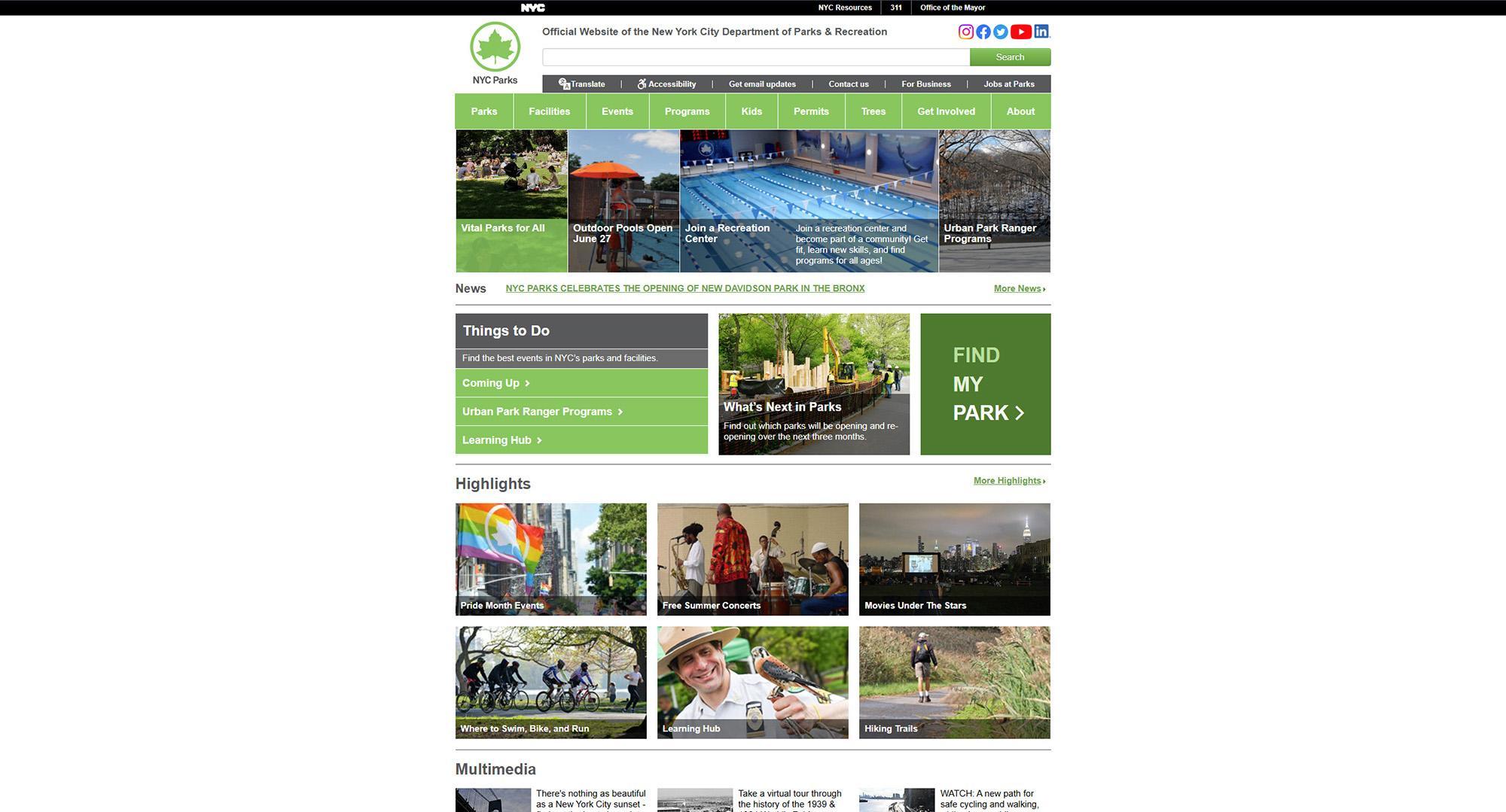
One look at the homepage and you just know this site will perfectly adapt to any screen size without significantly altering the placement of its visual elements. That’s not to say that other sites on here can’t do that, they can, but this one definitely has an edge in mobile-friendliness.
Even though there’s a lot going on from a functionality point of view, it’s all well laid out and streamlined, so it doesn’t feel like a mess. Instead, the site optimally uses the space available on each page.
It’s extremely straightforward to find what you’re looking for, since every header item has a dropdown menu complete with links, search menus, and even more drop downs, making sitewide navigation a breeze.
The branding and aesthetics are on point too, with a visually pleasing balance of olive green and pickle green against a generous amount of white space.
San Francisco Public Works
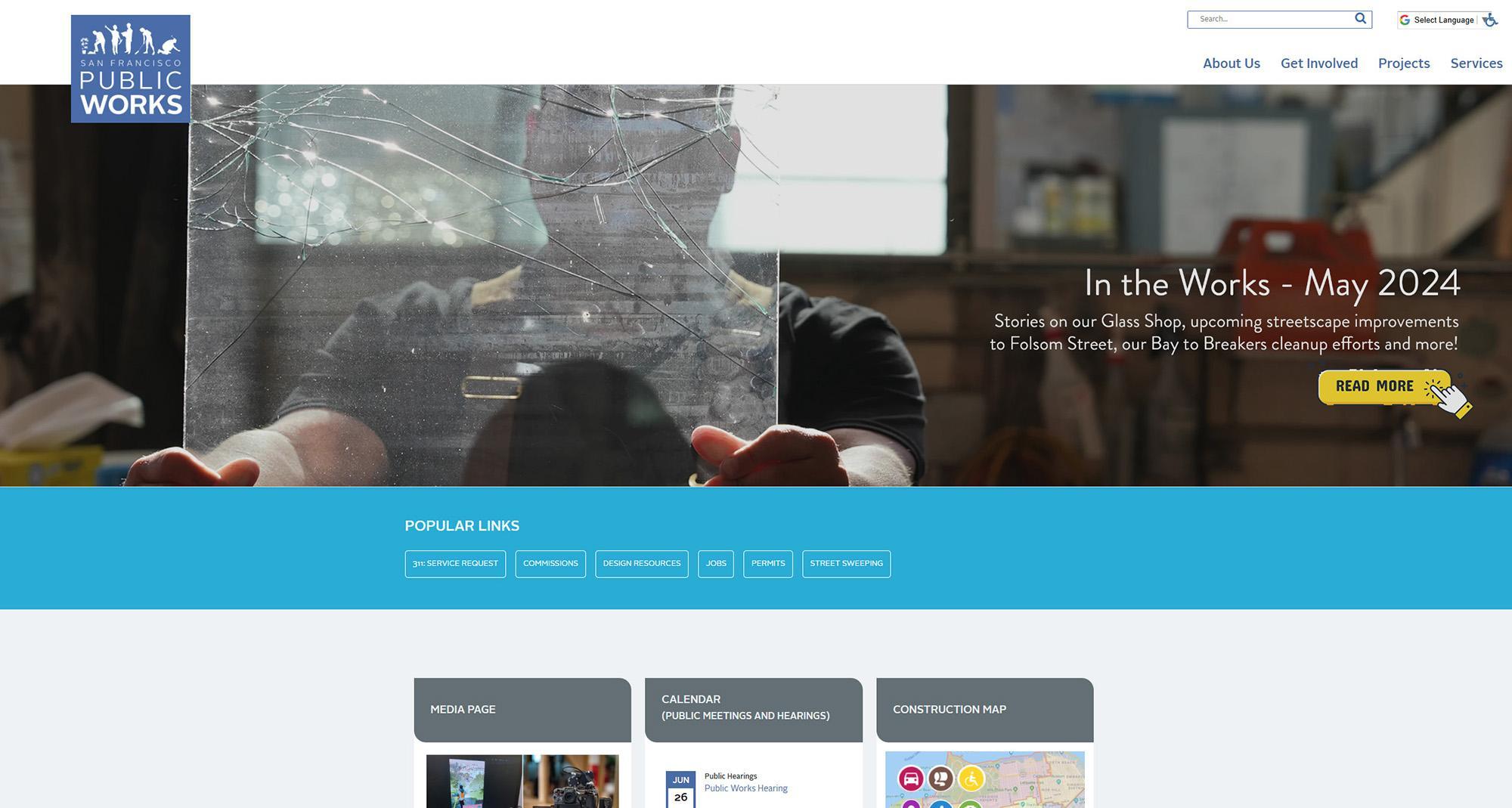
Of all the online municipal sites we’ve laid eyes on, those belonging to San Francisco have consistently been impressive both from a functionality and visual point of view. Perhaps this has something to do with the city being home to Silicon Valley.
The San Francisco Public Works website is simple, approachable, and unintimidating; whether you’re a tech savvy web surfer who cares about favicons and page load speeds or a luddite who’d much rather dial a number than open a web browser, you’ll find the site easy to navigate.
All the media on this site is evidently curated with attention to detail. Barring the projects section, which is exceptionally well laid out, every other page has minimalistic undertones, with a focus on only the most important elements.
Chicago Park District
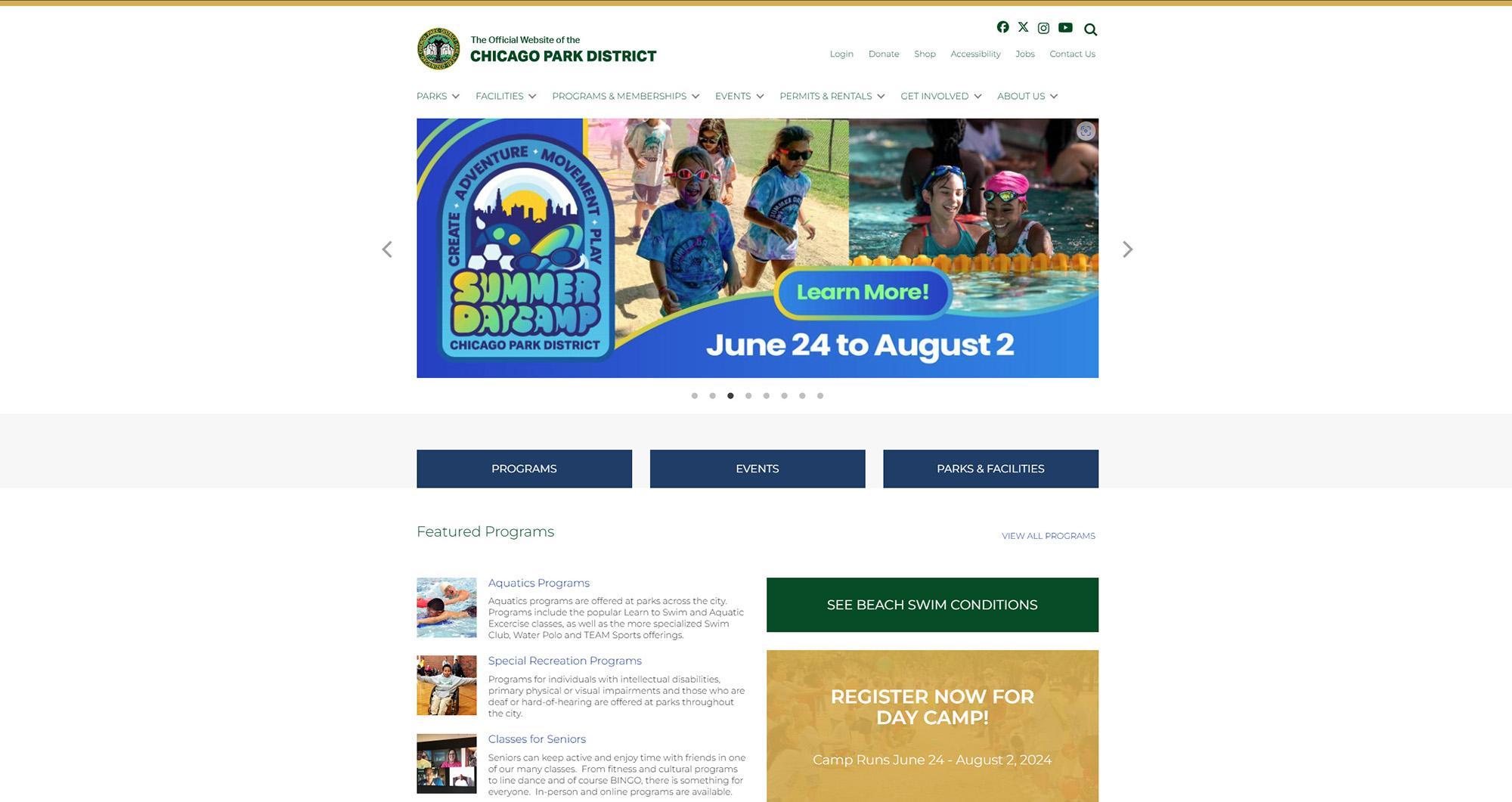
The Chicago Park District website blends user-friendliness, comprehensive information, and modern design, all while incorporating a light pastel color palette with occasional pops of ink blue.
You’ll also spot a search function that allows visitors to locate specific parks or services, making it a valuable resource for anyone looking to explore Chicago’s green spaces.
Above the header, you’ll find social media links and a language selection tool, followed by a toned-down red banner that displays hazard statements. Then there’s the main drop-down bar that contains an extensive list of online services and resources.
Here you’ll find information about each park, including amenities, hours of operation, and special events such as movie nights and NASCAR raffles. Inclusion of maps and facility locating options further enhances the user experience, allowing visitors to plan their visits with ease.
City of Boston Planning Department
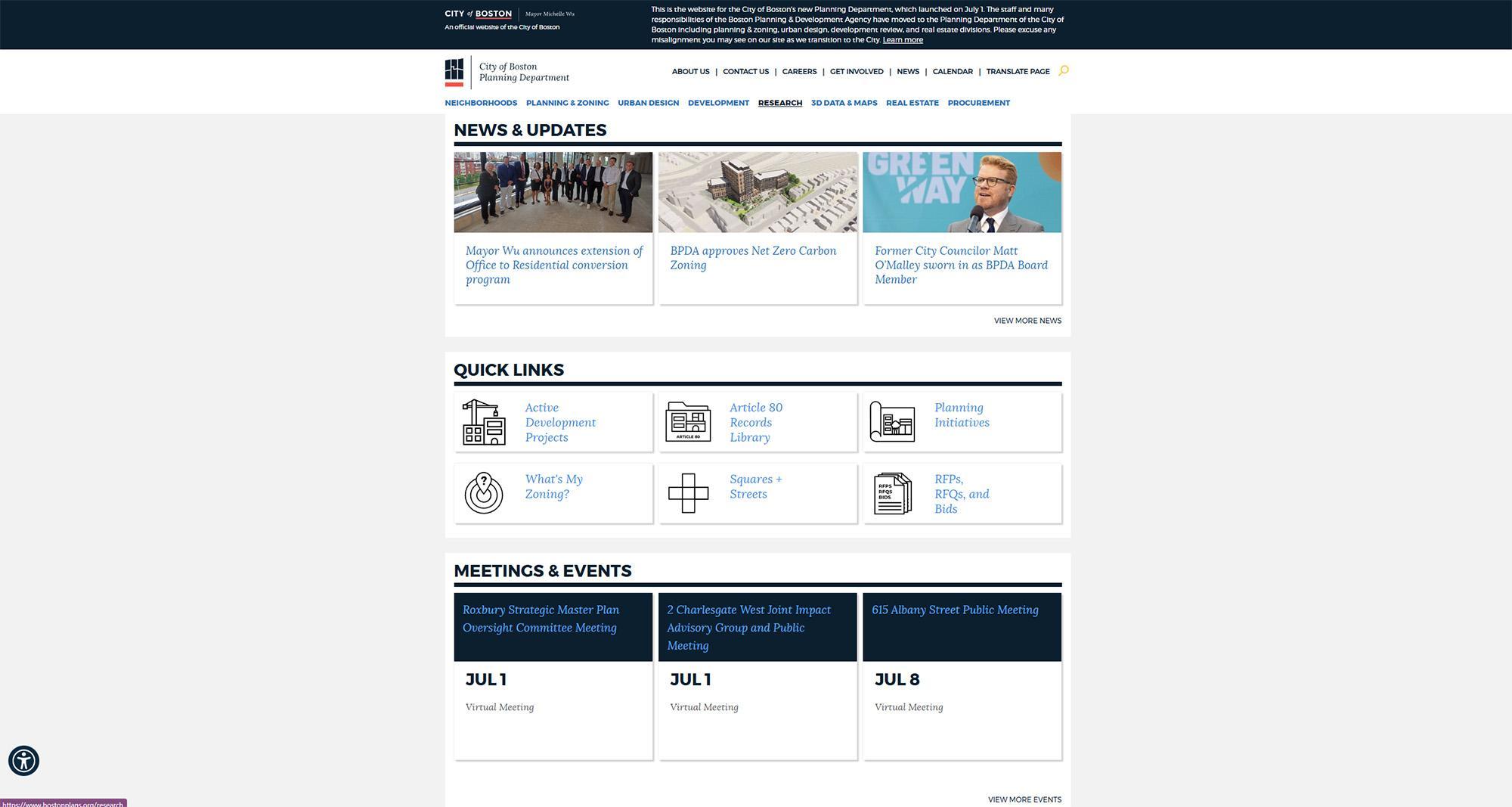
The city of Boston’s Planning Department exemplifies a no-frills, professional design. With its formal, newspaper-esque layout, it exudes an air of neutrality, making it extremely approachable for all demographics.
Every page resembles a document and utilizes a classic combination of Lora Regular and sans-serif fonts, further bolstering the site’s buttoned-up appeal.
Interestingly, any queries made in the search function will redirect you to Google with a preloaded “site:” search operator. This arguably does the same thing as your usual website search function, however.
On the homepage you’ll find news and updates, most frequented links, as well as information on meetings and events.
Moreover, the site makes it easy to stay informed on zoning commission hearings, explore development projects, apply for permits, and engage with planning initiatives.
San Francisco Planning Department
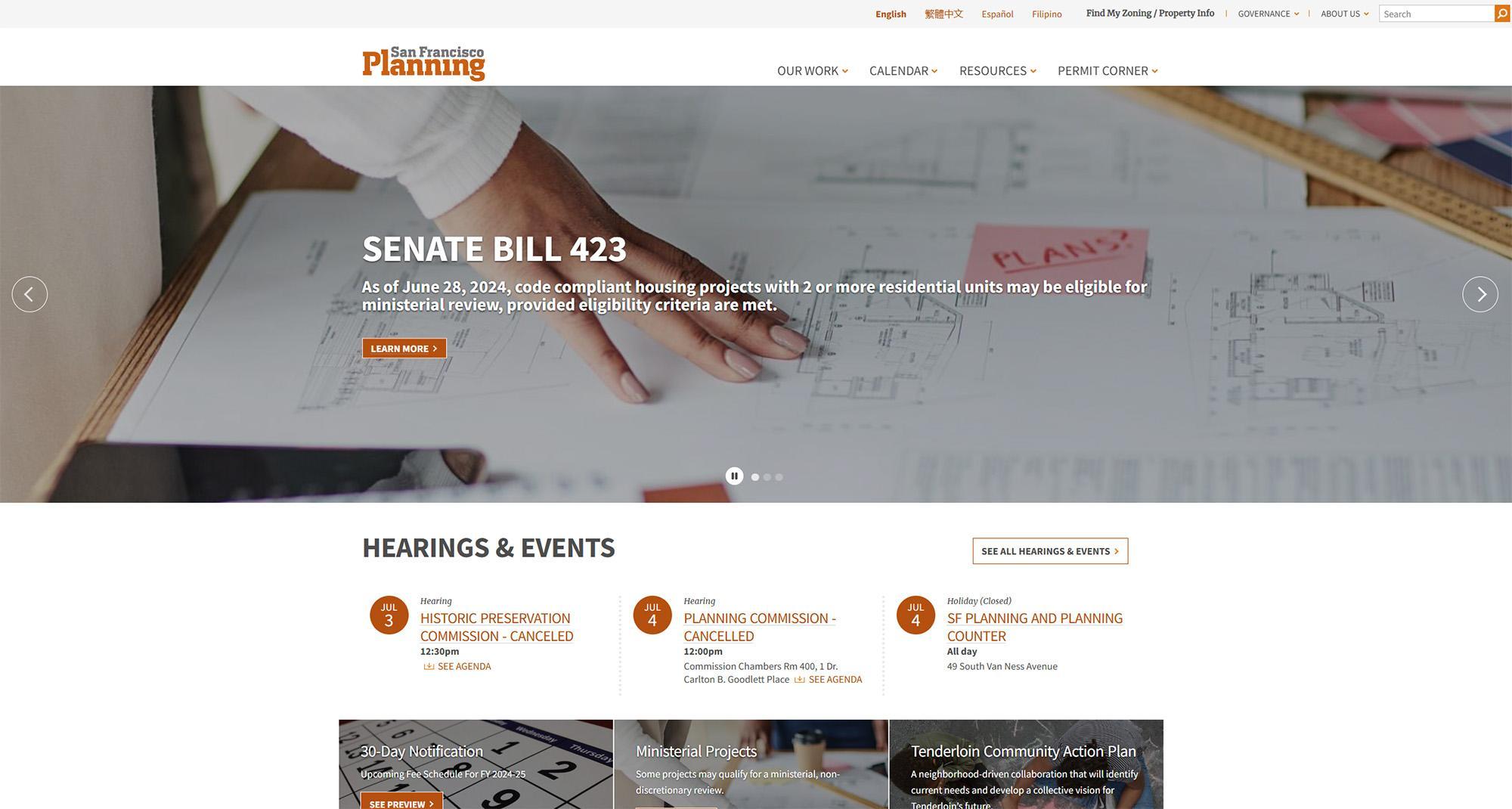
The San Francisco Planning Department website excels in simplicity and functionality, offering a wide range of tools and resources for residents, developers, and planners. You get easy access to essential services such as permit application, zoning info, and development project updates.
It lets you navigate through comprehensive pages dedicated to urban planning, environmental review, and historic preservation. On the aesthetic side of things, the site presents a clean and modern design. The simple and classic color scheme of orange, blue, and white makes for an executive appeal.
Navigation menus are intuitive, with clear headings that guide you seamlessly through the site. We particularly like the “permit corner” and “find my zoning info” sections; clear CTAs like these minimize a bit of guesswork, enhancing the user experience. Overall, the site’s navigability and design is commendable.
Essential Features of Effective Municipal Websites
Depending on how they’re designed, online sites can do a lot more than store and display content. Common applications include interactivity, e-commerce, user account management, communication, data analytics, automation, integration with other software, and much more.
However, municipal web portals have a unique set of needs, especially when juxtaposed with private sector websites. The two serve different purposes and audiences, which leads to several key differences in their design, functionality, and content.
See below for some of the most essential features of an ideal municipal website.
Ease of Navigation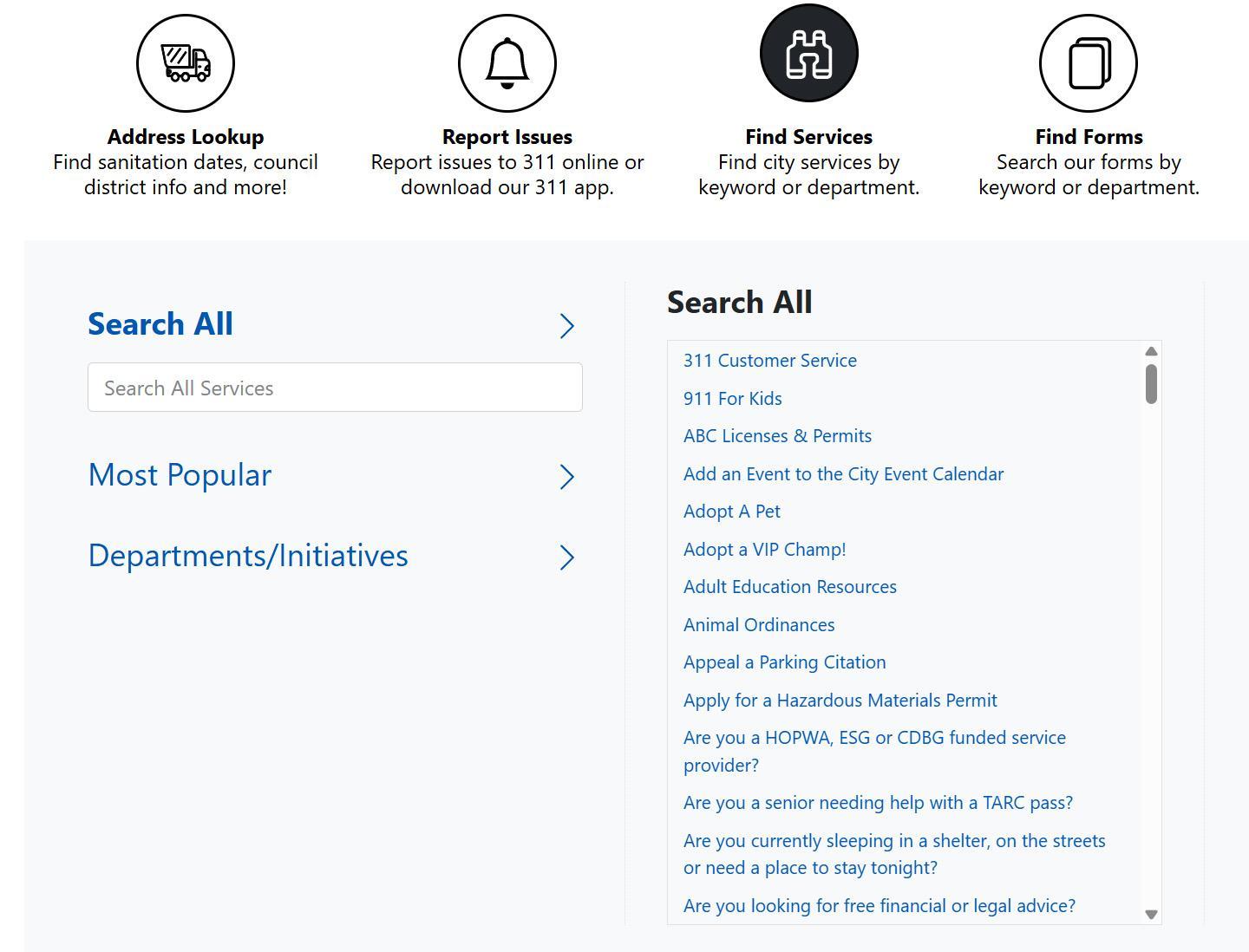
Storing important information on an internet site that’s hard to navigate is a recipe for frustration and higher bounce rates. User-friendly navigation is a non-negotiable feature for all kinds of digital platforms, especially those pertaining to official matters.
Building an online site for municipalities is quite an undertaking. If people can’t find what they’re looking for, it’s a wasted effort. Great websites have robust search functionality that allows users to locate specific documents or services easily.
Features like breadcrumbs, well-organized URL structures, and internal links help users to figure out their location within the site and allow them to backtrack easily at any time.
Community Engagement
One of the primary functions of a municipal website is to serve communities and provide unfussy access to essential services, enhancing overall community satisfaction.
To do this, using tools that foster engagement is a must; they inform residents about regional initiatives and provide a platform for open communication, which enables a strong connection between municipal governments and the public.
Here are five ways to fulfill this role.
Information Hub
A municipal website serves as a one-stop-shop for information. It provides details about services, departments, officials, policies, and ordinances.
For example, residents can easily access information on trash collection schedules, permit applications, community events, and other relevant matters.
Communication Platform
Effective communication is the cornerstone of community engagement. Websites facilitate and encourage participation from citizens by providing a line of correspondence between them and government entities.
They feature contact forms, feedback mechanisms, mass communication tools for emergency updates, and newsletters to keep residents informed and to gather their input on important issues.
Accountability and Transparency
Transparency builds trust within the community, and one way municipal websites leverage that is by publishing budgets, financial reports, ordinances, and meeting minutes.
The availability of information and relevant documentation encourages accountability between the municipality and the community. This reassures residents that their local municipality operates with integrity and openness.
Civic Engagement
Encouraging members of society to be a part of communal activities strengthens their collective identity. Top-tier examples regularly feature event calendars, volunteer opportunities, and public discourse forums for this reason.
This incentivizes residents to attend town hall meetings, join advisory boards, and contribute to communal initiatives. Additionally, involvement in volunteer activities and community projects benefits the community and gives individuals a sense of purpose and pride.
Emergency Management
In times of crisis, timely and accurate information can potentially be life-saving. Digital platforms for municipalities provide emergency alerts, evacuation procedures, and resources for disaster preparedness.
They serve as a vital communication channel during natural disasters, public health emergencies, or other critical situations.
ADA Compliance and Accessibility

Web accessibility and ADA compliance are not just legal requirements, they’re also ethical obligations. Well-made internet sites prioritize accessibility to ensure that all residents, regardless of ability, can access and use online services seamlessly.
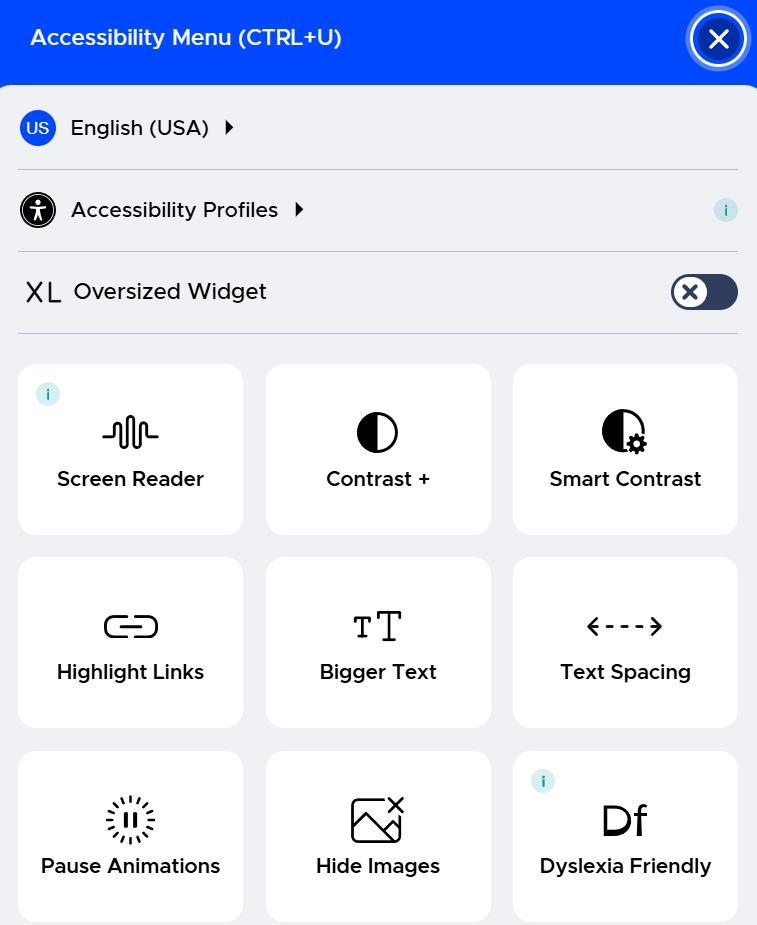
They adhere to Web Content Accessibility Guidelines (WCAG) and implement features such as alternative text for images, keyboard navigation, and compatibility with screen readers.
By making their online sites more inclusive, municipalities demonstrate their commitment to serving every member of the community equitably.
Mobile-Friendly Design
In an era dominated by smartphones and tablets, mobile-friendliness has become a buzzword, and for good reason.
Great municipal sites feature responsive designs that adapt seamlessly to various screen sizes and devices. Whether residents access the site from a desktop computer, smartphone, or tablet, they experience consistent usability and functionality.
Mobile-friendly design enhances user experience, which in turn increases engagement and ensures that vital information remains accessible anytime, anywhere.
Robust Security Measures
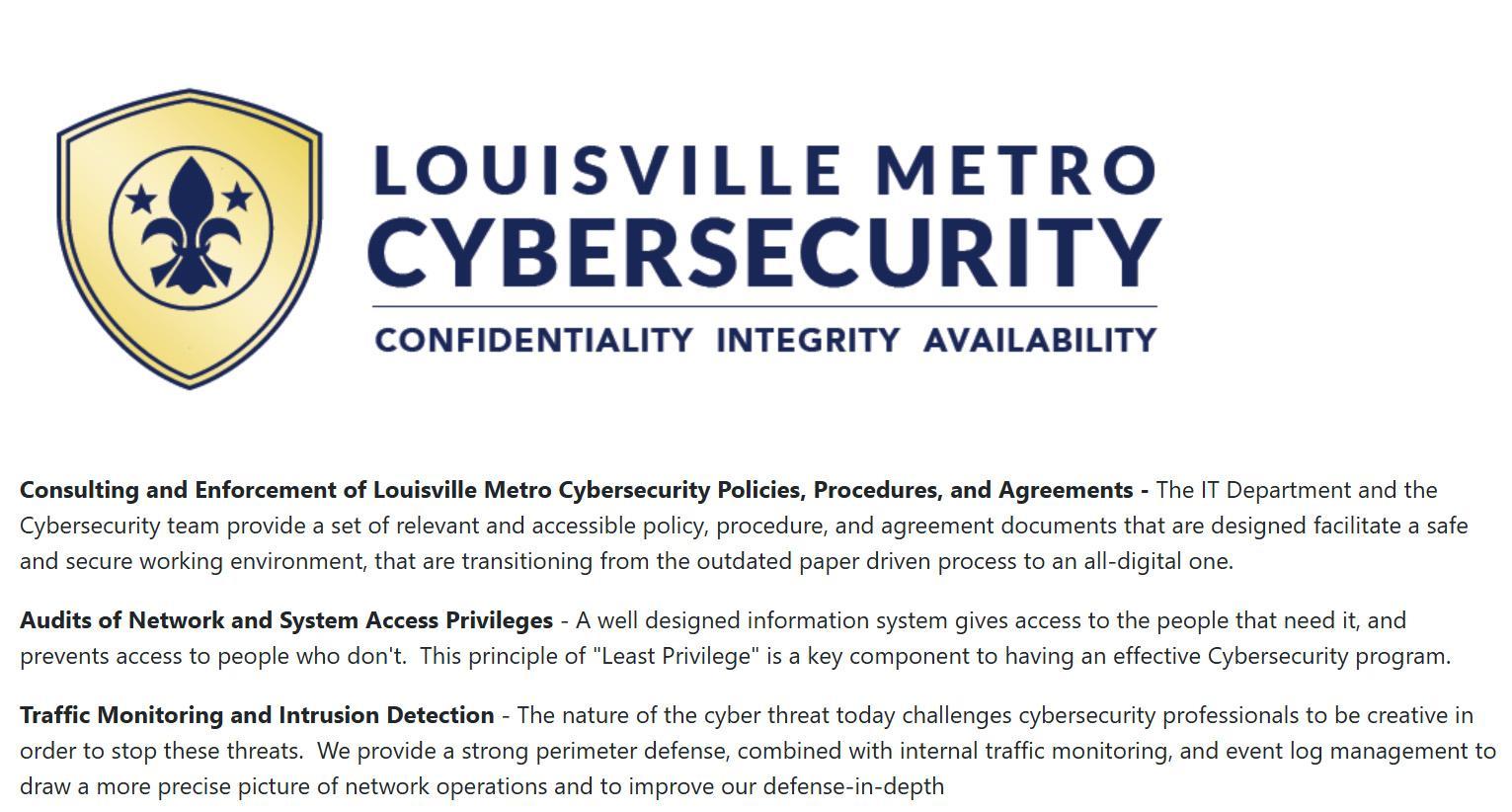
Protecting sensitive data and ensuring the integrity of online transactions is paramount for municipal web platforms. Implementing the latest cybersecurity practices is vital when it comes to safeguarding residents' privacy and maintaining public trust.
Websites employ encryption protocols, secure authentication methods, and regular security audits to reduce risks of data breaches and cyberattacks. By prioritizing security, municipalities demonstrate their commitment to safeguarding residents' personal information and maintaining the confidentiality of municipal operations.
Continuous Improvement and Innovation
Great municipal websites are never static; they evolve in response to changing needs and technological advancements. Regular updates, user feedback mechanisms, and ongoing usability testing drive continuous improvement.
Municipalities embrace innovation by integrating new features, adopting emerging technologies, and engaging with digital tools for digital transformation. By staying abreast of industry trends and practices, municipal websites remain relevant, efficient, and indispensable tools for engagement and service delivery.
Mastering Municipal Websites: Concluding Thoughts
Web portals are more than just digital platforms; they’re engines that power community empowerment, accessibility, and innovation.
By embodying the principles of effective communication, accessibility, mobility, and security, they elevate the standard of public service and strengthen the bond between residents and their municipality.
As citizens start to embrace the digital age more and more, investing in the development and bettering of your digital infrastructure becomes a long-term investment. Contact us today to get help with bringing a digital transformation to your community.